Here is how I built a Tipi for use on camping trips. I don't have pictures of the process of cutting, peeling and smoothing the poles. My two Son's and I harvested the 25 foot pines in a small stand in the middle of a cedar swamp. The pines were growing so thick that they only had branched near the tip. They all grew very straight and tall as they had to compete for the sun light. I think thinning them out did the remaining trees a favor. At least I hope so. Here are the poles right after peeling as I get ready to transport them from the family farm back to my place.
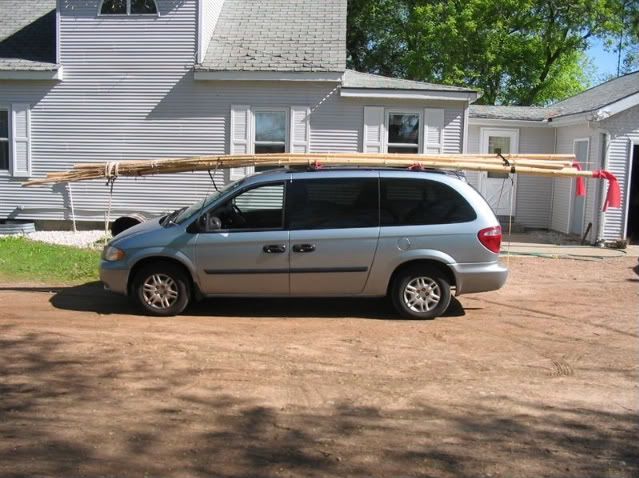
Here they are drying in the sun. Each day, I would give them a quarter turn as they dried. I had not yet smoothed the poles and removed the little branch stubs

During the drying time, I began to sew the part of the Tipi and the liner. This is the Tipi liner which I made from sewing together a bunch of canvas, painters drop cloths. each was cut into a sort of pie section and when laid flat on the grass it looks like the letter "C" Here it is installed.

The bottom flaps of the liner lay on the ground and are covered with whatever is used as a floor for the Tipi. It could be hides or canvas but this liner keeps the bugs and dust out as well as the wind during regular Tipi living. It also helps create the draft needed to allow for a small fire to be made in the Tipi. The top pf the liner is held in place with a rope that is tied around all the poles and the bottom in held by tying off to stakes in the ground.

I painted a scene on the liner. It is supposed to look like a painted hide but I did a rather poor job on the outline.
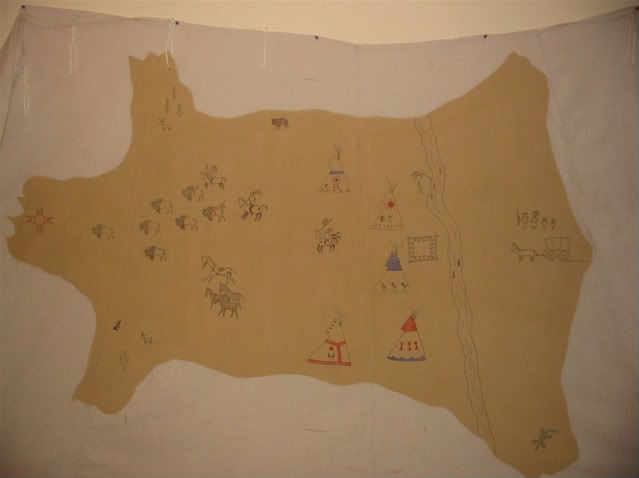
This Tipi is 14 feet across at the bottom and has 25 foot tall poles. I took 33 yards of Waterproofed and fireproofed cotton canvas to do the job.

In order to layout the pattern on the canvas, I first needed to join a few large sections of the canvas together. I used a 60's vintage Singer and at times had to go through up to 6 layers of the canvas.
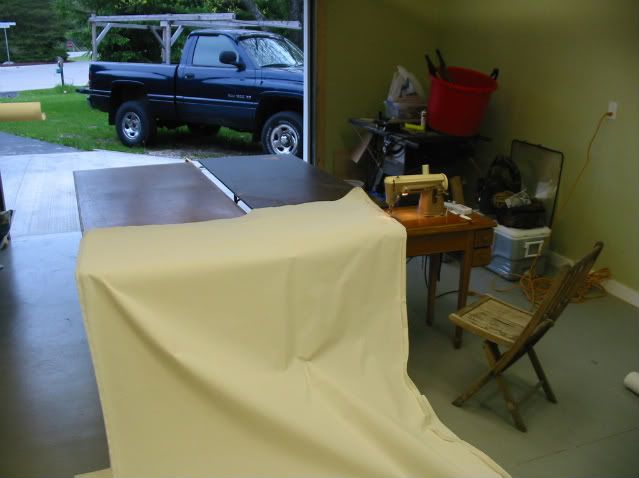
Once sewn. I could mark out the pattern on the canvas and cut out the pattern.


Then it was back to the sewing machine to fold and hem all the cut edges to keep them from fraying. This included the opening for the door
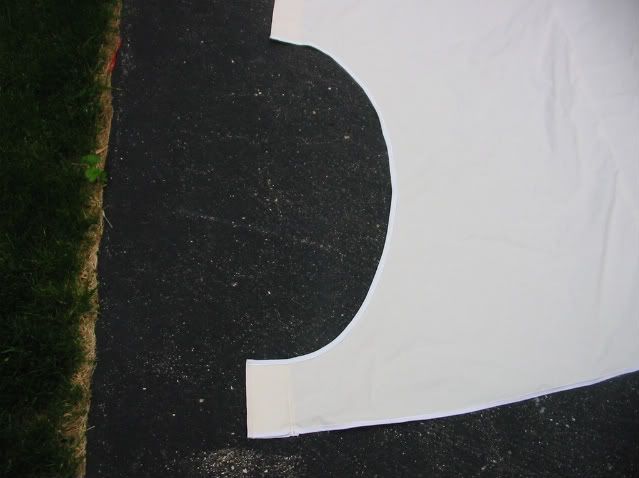
The area for the lifting pole.
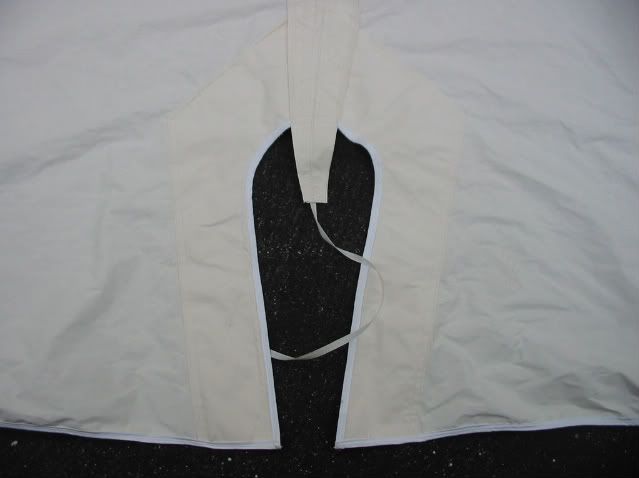
and the pockets for the smoke flap poles.
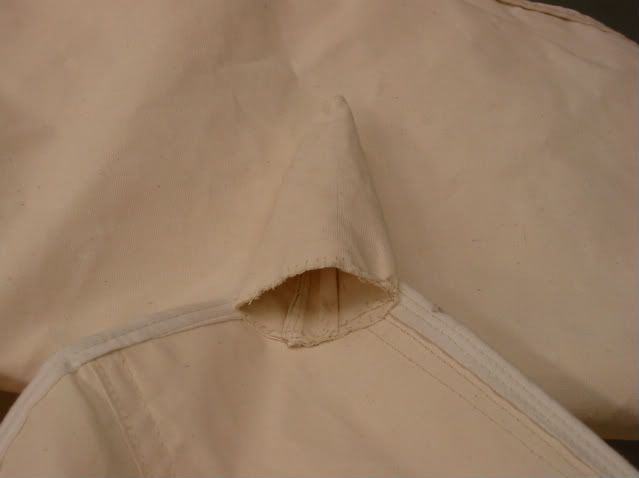
This is what it looks like on the ground.
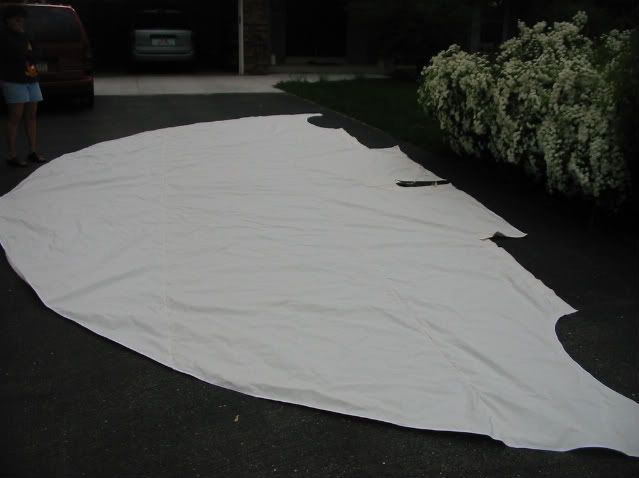
Then it's time to put it up. Three poles are set and marked as the ones that will form the tripod. They are lashed together and set up and the rest of the poles are set in the "V" created by the intersecting poles. All work is done on the ground. No ladder is needed.


Then all the poles are held together by circling around and around and tying off the rope to one of the poles so the process can be reversed when taking the Tipi down.

The last pole is used to lift the canvas in place and is called the lifting pole. The canvas is tied to the lifting pole and then lifted and leaned against the rest of the poles.

Then the canvas is walked around the frame of poles.

While the canvas is still loose, the lacing pins are installed.
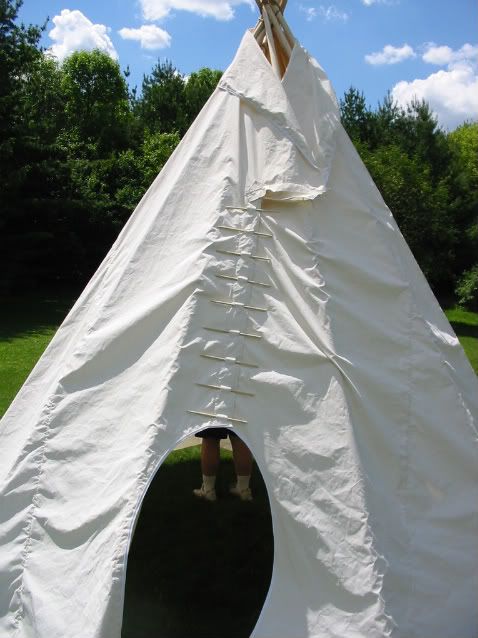

To tighten and stretch the canvas to give the tipi a full and tight look, all the bases of the poles are moved outwards. The canvas is held tight by tying it off to stakes. To keep the canvas from ripping, small stones are lashed into the canvas with ropes and it's those ropes that are used to tie it down. The outer Tipi does not go all the way to the ground. This creates an area for air to come up and in between the outer Tipi and the inner liner. As the air warms, it rises. It acts like the attic of your house and it's this circulation that carries the smoke up and out.


The next step is to insert the smoke poles. These poles are shorter than the other poles and allow for adjusting the smoke flaps based on wind direction and allows for closing them all together in case of rain.


The bottom of the smoke flaps are tied off to something to direct the wind or left untied in calm.

Here they are closed for the night and this picture reminds me that I forgot to mention painting the Tipi
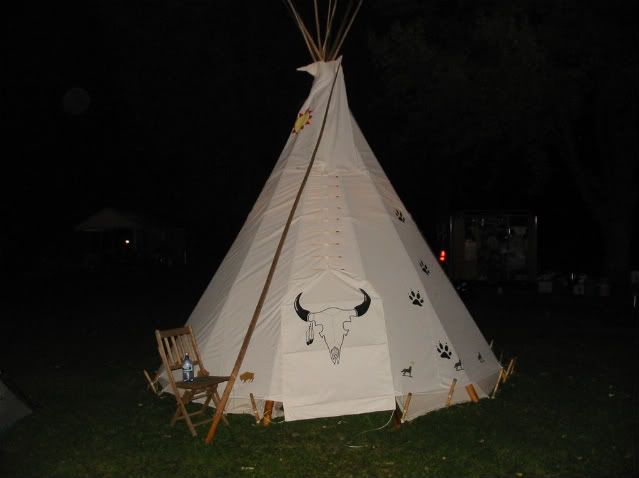
I painted the Tipi with exterior house paint that was watered down. On the base, I painted bison along one side and wolves along the other and climbing from the base to the top I added wolf paws and a sun.
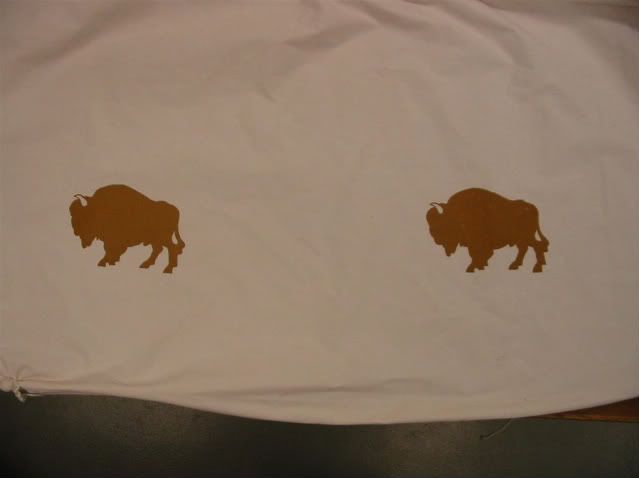


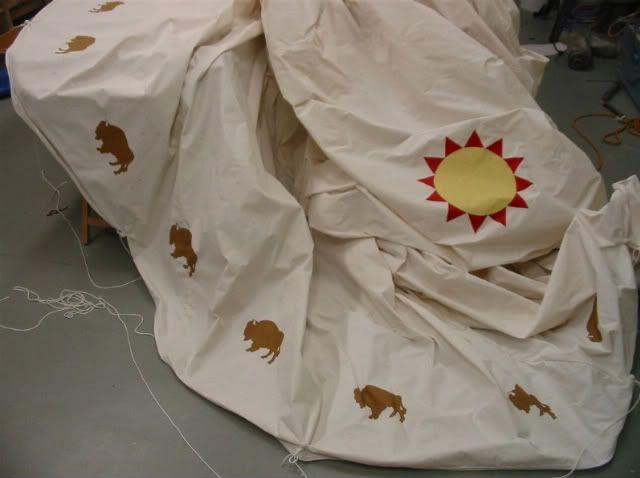
On the door, I added a bison skull and feathers.

It makes a great night light.

Here is your view as you wake up in the morning.

The entire process of erecting the Tipi takes an hour and a half and can be done alone and without a ladder. I have spent many nights in it and it sleeps 6 adults.
Tipis, Tepees, Teepees: History and Design of the Cloth Tipi
http://www.amazon.com/exec/obidos/ASIN/1586855115/mudbrookvalleyco